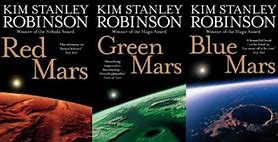
No, this is not a political statement but a review of Kim Stanley Robinson’s Mars novels (Red Mars, Green Mars, Blue Mars) … see? They go from Red to Blue. And since these were published from 1992- 1996, pre-date that whole silly red state/blue state thing, which is in itself wrong because red is the color of Marxism and what we currently consider red states are as far from Marxism as the color blue is, or was, until Tim Russert

thought he’d be cute in the 2000 election and switched the colors and for reasons I still don’t get, everyone has followed along. I mean, all you have to do is take a casual glance at Soviet flags
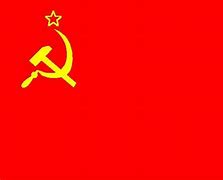
to see what red really stands for. But it may be appropriate here because Robinson’s Mars moves from a free and downright anarchic society in the first book to an unbelievably sophisticated (and unrealistic) communo-socialist-capitalist-barter system in the last one. Red to Blue. Get it?
The story itself is fairly straightforward: Earth selects 100 people (dubbed the First Hundred. Catchy) to colonize Mars and, from their arrival to about 200 years later, Mars is turned from an arid, dead, frozen hell into somewhat of a nice place, say Alaska in the summertime. Replete with polar bears. No seriously; Ann Clayborne, one of the highlighted characters who manages to survive through all three novels, gets chased by a polar bear while hiking the outback. There are about ten highlighted First Hundred characters, from John Boone, the first man on Mars, to Hiroko Ai, a ghostly highly influential non-presence from Green Mars on (but hold on, she’s actually everywhere. Even back on Earth), who bring the story along, from training in the Arctic to sailing on Martian seas. Then there are the children of the Hundred, decanted mostly from various in vitro tubes (with a few natural childbirth outliers here and there) and immigrants and later arrivals and spies and cops and paramilitaries all over the place who add their two cents but, mostly, it’s the story of these ten or so First Hundred, over a couple hundred years. Wait, what? Yeah, folks are living well past their shelf life, thanks to Martian science, which is science done on Mars, as opposed to done on Earth, which somehow becomes tainted and evil if it’s done on Earth, unlike the science on Mars, which is pure. Depending on your viewpoint.
And viewpoints are all over the place, from the ultra Reds to the ultra Greens, which also does not mean what is does today: the Reds are those who want to keep Mars untouched, therefore red, as opposed to the colonists who want to terraform into a more earth-like place, turning it green, so to speak. See? Those colors should be reversed, by today’s definitions. Which makes this somewhat of a confusing read, that is, if you try to apply today’s definitions to novels written 20 years ago. Which is revisionism. Which you should not do. Have to read a book in its context, not in modern parlance trying to impress someone with how sophisticated and with-it you are.
But I digress.
And digression is the watchword because, Holy, Hannah, does this trilogy range all over the place. Red Mars
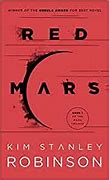
begins at a festival 33 years after John Boone lands on Mars, and, after he is murdered during that festival, flashes all the way back to the Hundred’s selection and training and then launching of the first colony ship, the Ares (natch), and then landing and putting things together resulting in the first actual town, Underhill, and then we’re back to the point John is killed and then revolution. Which doesn’t go very well. See, it’s a little difficult to revolt against Earth when all they have to do is pop the bubble of your little town and let all that nice fresh oxygen out into the not so fresh Martian atmosphere. Which may be an incentive to green the place up so Earth can’t do that and then we are in Green Mars
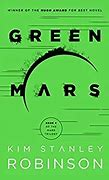
with the terraforming going apace, except for the Reds who are willing to blow up and/or flood your town to keep Mars an arid, dead, frozen hell. Really? Really? And then Earth basically blows up and Mars becomes more of a liferaft than a science experiment and who do you think is going to win this argument? Ergo, Blue Mars.
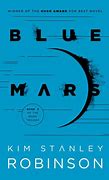
Man.
It feels very much like we are taking the long way around, out past Jupiter and back, to get to Mars. This has much to do with Captain Digression, Mr Kim Stanley himself,

who simply cannot resist writing overlong descriptions of things that were better left on the editor’s floor, such as a painfully detailed exposition on lichens and fungus, which is far more about both topics than anyone actually wants to know, except the micro specialists involved. This is the problem when big-brained scientists write scifi, they are bent on (a) showing how much they know and (b) keeping their other big-brained colleagues from finding fault: “Aha, you said the lichen spyrogyra numnutsias grows at 25 Kelvin when in reality it can only grow at 26 Kelvin! So therefore you are an idiot and your book is invalid!” You know stuff like that, like everybody yelling at Ray Bradbury because he had the sunrise on Mars coming up at the wrong place. Or was it the sunset? Don’t know. Don’t care. It’s friggin’ fiction. Lighten up.
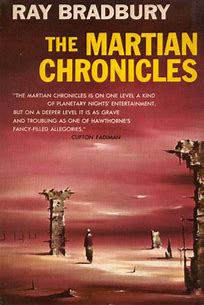
But Kim Stanley does not, giving us several more interludes, including a painfully detailed political convention reminiscent of the Simpson’s take on the Galactic Senate in The Phantom Menace.

Oy. Stop. And I almost did, but forged on because this was my second attempt to read this trilogy and by God, I was going to do it this time and not throw it across the room like I did 20 years earlier because of all. These. Sidebars!
And I’m so glad I did because, halfway through Blue Mars, you see the point. And the point is, we keep going. To Jupiter. To the Kuiper Belt. And past.
And that’s marvelous.